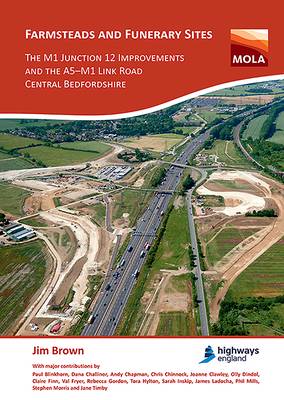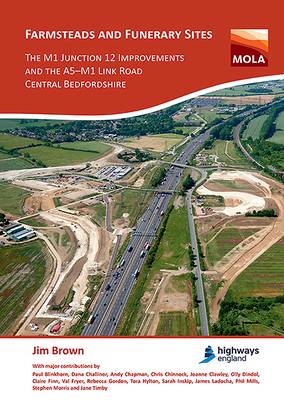
Je cadeautjes zeker op tijd in huis hebben voor de feestdagen? Kom langs in onze winkels en vind het perfecte geschenk!
- Afhalen na 1 uur in een winkel met voorraad
- Gratis thuislevering in België vanaf € 30
- Ruim aanbod met 7 miljoen producten
Je cadeautjes zeker op tijd in huis hebben voor de feestdagen? Kom langs in onze winkels en vind het perfecte geschenk!
- Afhalen na 1 uur in een winkel met voorraad
- Gratis thuislevering in België vanaf € 30
- Ruim aanbod met 7 miljoen producten
Zoeken
Farmsteads and Funerary Sites
The M1 Junction 12 Improvements and the A5-M1 Link Road, Central Bedfordshire: Archaeological Investigations Prior to Construction, 2011 & 2015-16
Jim Brown
Hardcover | Engels
€ 162,45
+ 324 punten
Omschrijving
MOLA (Museum of London Archaeology) undertook extensive excavations during the construction of two separate, but adjacent road schemes, some 4.5km apart near Houghton Regis and Toddington, in south Central Bedfordshire. Taken as a whole, the excavations provide a detailed multi-period dataset for regional and national comparison. The first evidence for occupation occurred in the middle/late Bronze Age comprising pits and clusters of postholes, including four-post and six-post structures. Two pit alignments, more than 2km apart, also indicate that land divisions were being established, and in the late Bronze Age/early Iron Age a significant new settlement emerged in the valley bottom. Parts of a further contemporary earlier-middle Iron Age settlement lay at the top of the valley but neither settlement extended into the Roman period. In the late Iron Age or early Roman period three or four new settlements emerged with occupation continuing into the late Roman period in at least one of these. Of particular interest was the recovery of two significant Aylesford-Swarling type cemeteries as well as a third cemetery which largely comprised unurned burials, including some busta, but with few accompanying grave goods. In the late 7th-century a small probable Christian conversion open-ground inhumation cemetery was established with burials accompanied by a range of objects, including a rare work box, knives, brooches, chatelaine keys and a spearhead. Parts of three medieval settlements were uncovered including one with a potters' working area.
Specificaties
Betrokkenen
- Auteur(s):
- Uitgeverij:
Inhoud
- Aantal bladzijden:
- 628
- Taal:
- Engels
Eigenschappen
- Productcode (EAN):
- 9781789692600
- Verschijningsdatum:
- 29/02/2020
- Uitvoering:
- Hardcover
- Formaat:
- Genaaid
- Afmetingen:
- 211 mm x 292 mm
- Gewicht:
- 1905 g

Alleen bij Standaard Boekhandel
+ 324 punten op je klantenkaart van Standaard Boekhandel
Beoordelingen
We publiceren alleen reviews die voldoen aan de voorwaarden voor reviews. Bekijk onze voorwaarden voor reviews.









